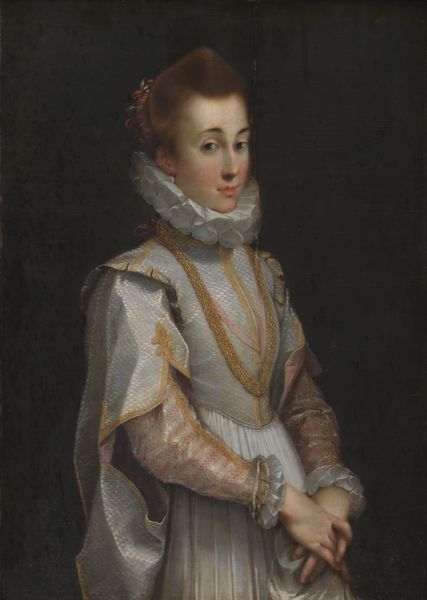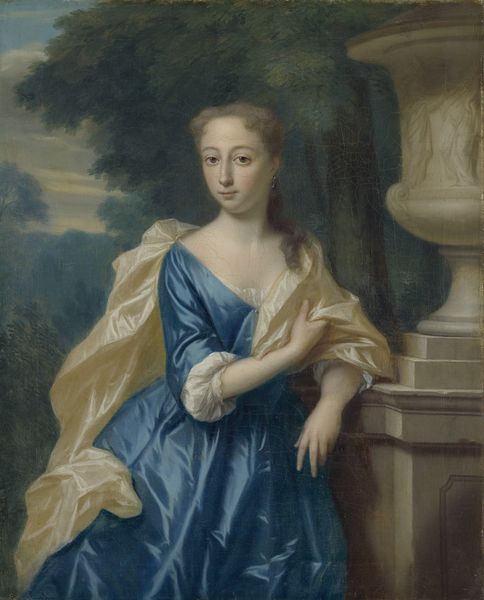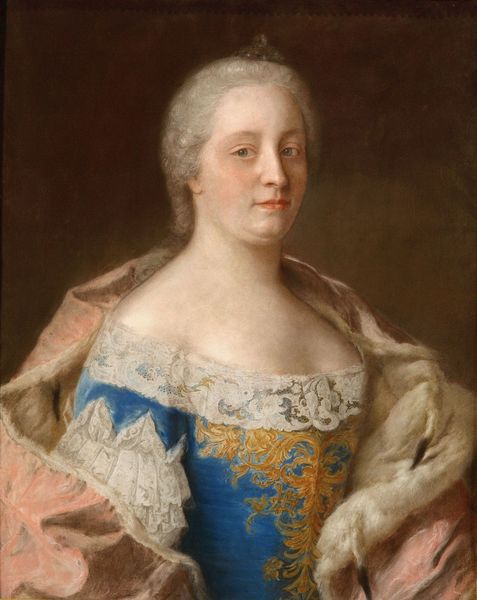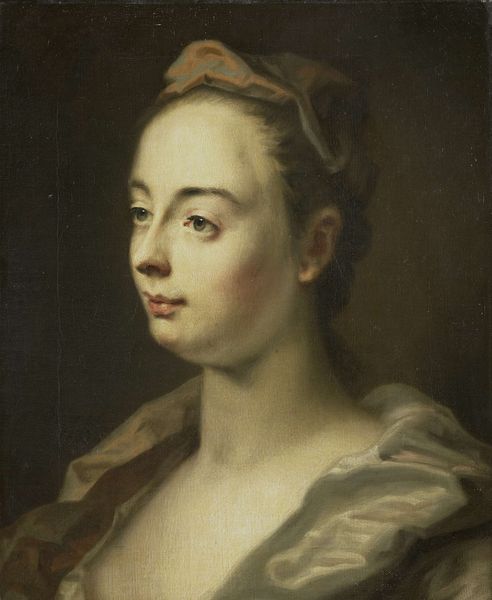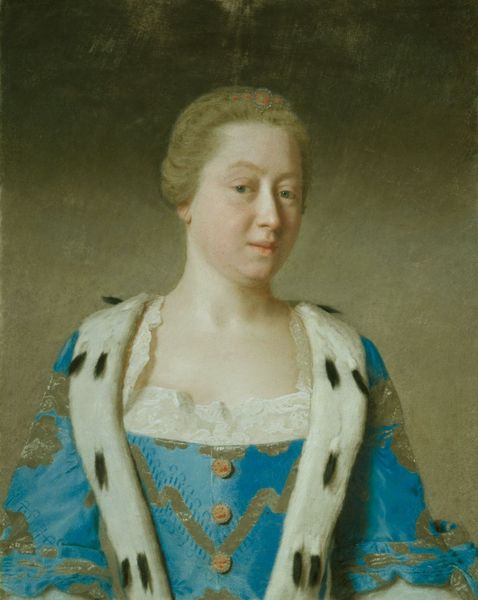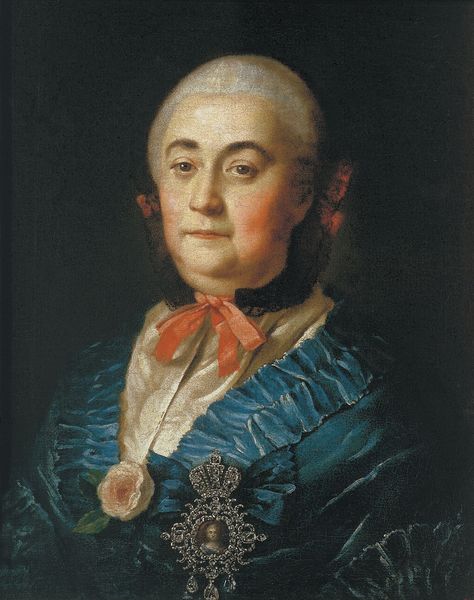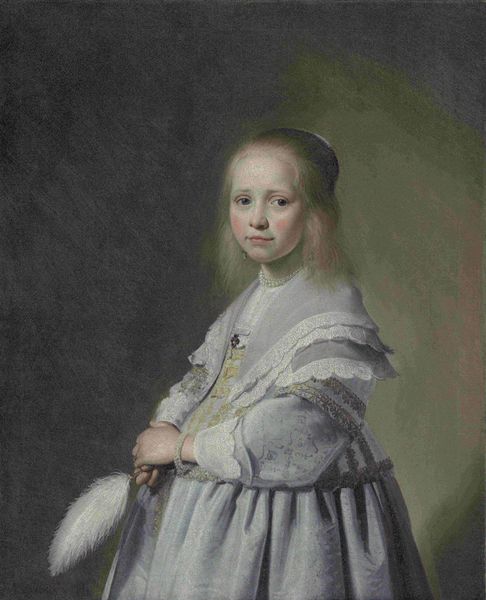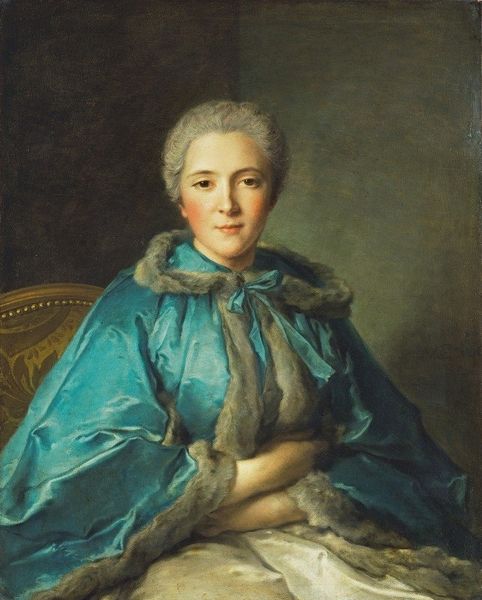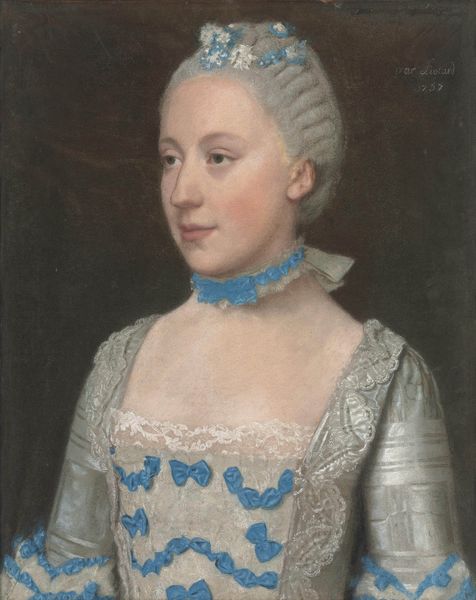
painting, oil-paint
#
portrait
#
painting
#
oil-paint
#
figuration
#
history-painting
#
academic-art
#
rococo
Copyright: Public domain
Curator: Looking at Jean-Étienne Liotard’s “Portrait of a Lady with a Blue Dress and Lace Collar,” painted in 1757, what immediately strikes you? Editor: The color palette is just mesmerizing! The soft blues of the dress contrasted with the stark white lace create an almost ethereal effect. Curator: Absolutely. The portrait is a fascinating reflection of 18th-century aristocratic ideals. Note the posture of the sitter: very erect and composed, indicative of social training. Editor: The way light falls on the silk of the dress, rendering its folds and ripples, demonstrates superb technical skill. It’s also interesting how the smooth, almost porcelain-like skin contrasts with the detailed texture of the lace collar. It adds visual interest, I feel. Curator: Precisely, the material richness on display served not just an aesthetic purpose, but a social one, signaling wealth and status within a society sharply divided by class. Such garments would have signified adherence to specific courtly fashions of the time. Editor: Also, what do you make of her gaze? It seems direct but somewhat vacant. Does it portray more than surface beauty? Curator: It does speak volumes. During the Rococo era, female portraiture served primarily as representations of social roles more than deeply individualized identities. Her slightly detached gaze aligns perfectly with expectations for upper-class women, valuing restraint and decorum above all else. Editor: Thinking about the museum’s mission to encourage accessibility to a broad public, Liotard’s work highlights how portraits can encode and reflect particular social codes of conduct. I do think his composition elevates it above mere illustration though. Curator: Yes, exactly. That thoughtful tension is really what keeps drawing me back to this piece. Editor: I leave having pondered not only the beauty of the sitter’s blue dress, but also the silent constraints that governed her world.
Comments
No comments
Be the first to comment and join the conversation on the ultimate creative platform.

